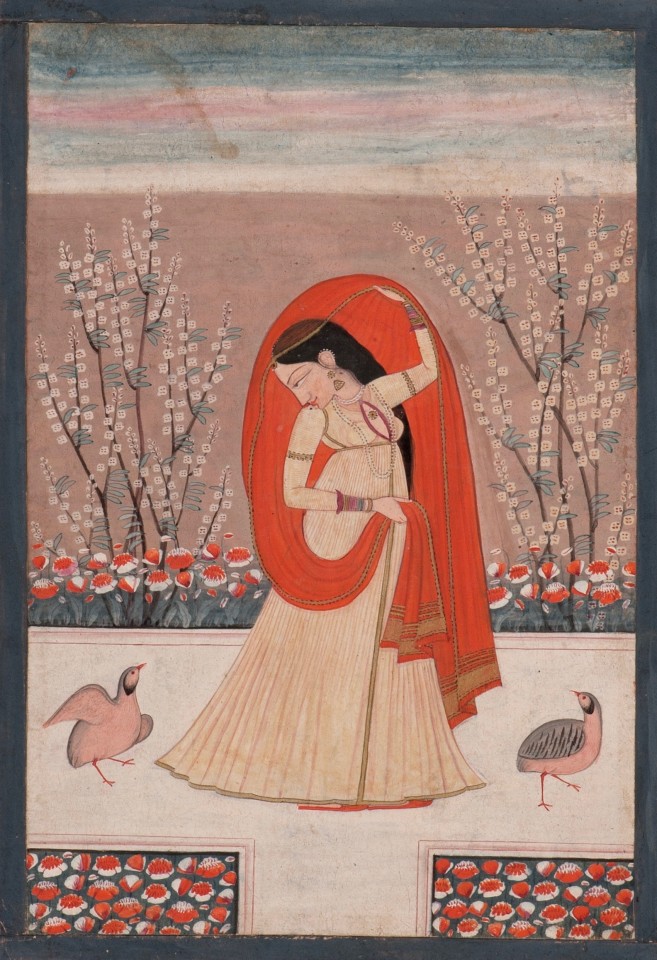Guler or Kangra, India
Opaque pigment on paper
Circa 1810-1820
Numbered 14 on the reverse, with Mandi stamp bearing number 4298
The chakor partridge find reference in Indian scriptures dating back to the 2ndcentury AD. Within the tradition of Indian love poetry chakors are identified as symbols of intense and unreciprocated love. At times pugnacious and impulsive, Chakors are famous for their love for the moon and gaze at it constantly, at times for hours. The bird is also known for its monogamous nature and mates for life, it is even believed to die next to its deceased mate. These beliefs explain their long association with love poetry.
In the painting, a lovesick Nayika can be seen in a garden, flanked by a pair of chakors who gaze at her moonlit face. The subject-matter appears to be based on a couplet by the Braj poet Bihari, according to which chakors are gazing at the heroine’s fair-complexioned face, confusing it for the moon. The Nayika coyly pulls a loose odhni over her head, as she turns her face away from the gaze of the beholder. The chakors appear to be transfixed on her face. The painting appears to be executed by Guler artists working for the Mandi Court, who had possibly migrated from Kangra during the reign of Raja Ishwari Sen (r. 1788-1826). The Nayika is wearing a peshwaz with a slit-blouse design, a popular fashion in Kangra painting during the last phase of the 18thcentury. Her elongated eyes, sharp chin, slender and tender limbs, and a porcelain-like delicacy are the ideal characteristics for a beautiful damsel within the Pahari tradition.
